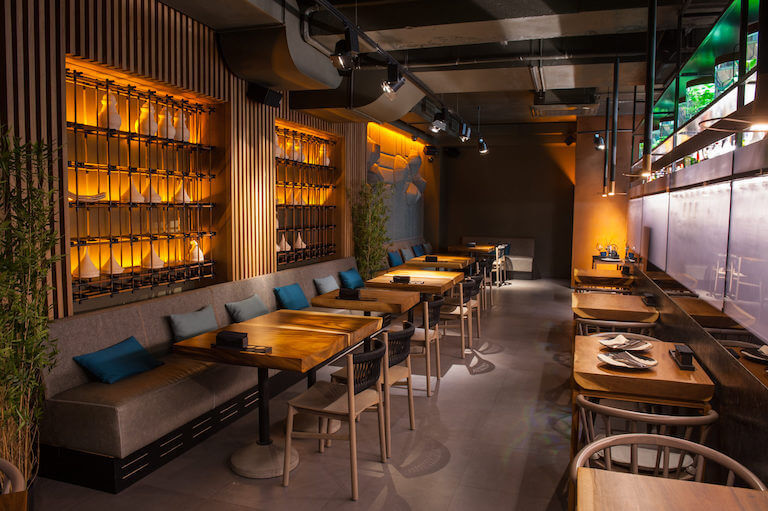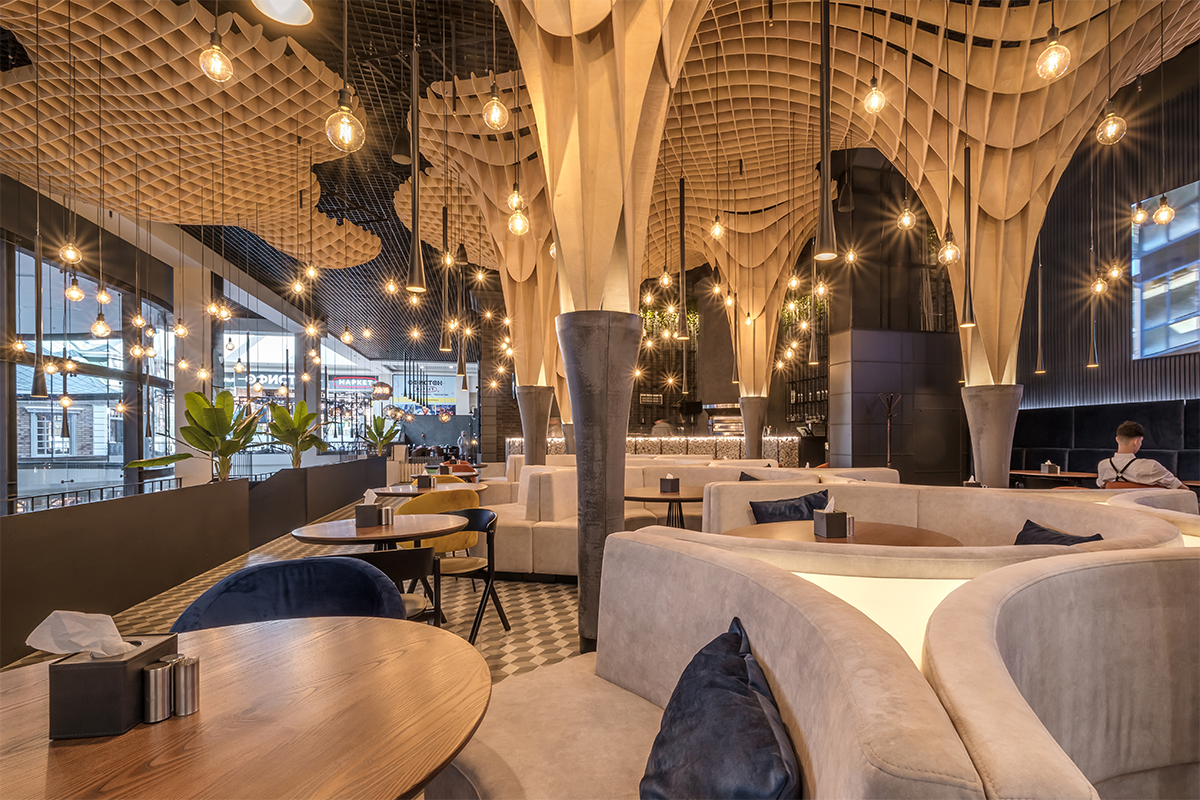Savor Genuine Asian Food With a Pan-Asian Spin for a Cooking Experience
Starting a cooking journey with authentic Eastern cuisine, improved with a Pan-Asian twist, provides a distinct opportunity to discover the rich tapestry of flavors that specify the region's varied cooking traditions. This experience invites you to savor the beautiful equilibrium of preferences-- pleasant, salted, spicy, and sour-- harmonized by fragrant natural herbs and seasonings. Think of the innovative combination of Thai curry and ramen or the unforeseen joy of sushi burritos. As you ponder these luring dishes, think about the cultural narratives and historic impacts that shape them, each bite using a story waiting to be uncovered.

Exploring Pan-Asian Tastes
In the realm of worldwide gastronomy, Pan-Asian food sticks out for its amazing diversity and the harmonious interaction of tastes from different Asian cultures. This cooking approach commemorates the abundant customs and special active ingredients found throughout the continent, creating a tapestry of preferences that is both intriguing and satisfying. Trick to Pan-Asian food is its capacity to balance different tastes-- pleasant, salty, spicy, and sour-- while highlighting the quality and quality of each component.
From the umami-rich soy sauce of Japan to the intense chili peppers of Thailand, Pan-Asian cuisine uses a comprehensive scheme of tastes. These elements are frequently incorporated in creative ways, improving recipes with layers of complexity. For instance, making use of aromatic herbs such as lemongrass and cilantro, usual in Vietnamese and Thai cuisine, adds a rejuvenating brightness to dishes, while the consolidation of coconut milk supplies a creamy, rich structure.
The focus on fresh fruit and vegetables and fragrant spices guarantees that each meal is not only a feast for the palate yet additionally for the detects. Pan-Asian food invites diners to start a culinary journey, checking out the vast and differed landscapes of Eastern gastronomy with every bite.
Fusion Meals to Try
While Pan-Asian cuisine is commemorated for its standard flavors, the contemporary culinary landscape is progressively embracing combination dishes that blend these classic aspects with influences from other areas. This ingenious approach not only honors the rich heritage of Eastern cookeries yet additionally introduces novel preference experiences that attract contemporary palates.
A prime example of such a combination meal is the Korean-Mexican taco, where marinaded bulgogi beef is covered in a warm tortilla, covered with kimchi and a spicy gochujang-infused salsa. This combination marries the bold, savory tastes of Korea with the vivid, fresh components of Mexican cuisine. Likewise, sushi burritos have gained popularity, joining together the delicate artistry of Japanese sushi with the passionate, hand-held comfort of a burrito, often including fusion active ingredients like tempura shrimp and avocado with a drizzle of wasabi mayo.
An additional noteworthy dish is Thai curry ramen, which instills the luscious, fragrant spices of Thai curry right into the comforting broth of conventional Japanese ramen, creating an unified mix that tantalizes the detects. These fusion meals extend beyond mere novelty; they stand for a culinary dialogue in between cultures, urging exploration and innovation in the globe of Pan-Asian cuisine.
Essential Active Ingredients and Spices
To truly appreciate Pan-Asian food, one need to recognize the vital active ingredients and seasonings that create its structure. This varied culinary design draws from an abundant tapestry of Eastern practices, utilizing a harmonious mix of flavors and textures.
Aromatic aspects are essential, with lemongrass, ginger, and garlic being common across various Pan-Asian dishes. These active ingredients give an aromatic base that enhances the intricacy of flavors. Seasonings such as star anise, cardamom, and cinnamon present heat and personality, resembling impacts from regions like China and India.

Cooking Methods and Tips
Grasping the art of Pan-Asian food needs knowledge with its distinctive food preparation methods, each adding to the dynamic tapestry of flavors this cooking tradition is celebrated for. Central to these techniques is the stir-fry, a quick food preparation technique that protects the dietary honesty and dazzling shades of ingredients. Using a wok, the stir-fry approach enables also warmth distribution, important for attaining the particular appearance and flavor equilibrium of Pan-Asian recipes.
One more fundamental technique is steaming, especially widespread in Chinese cuisine. This mild technique keeps the all-natural tastes and nutrients of components, making it excellent for fish and shellfish and veggies. Dumplings, a beloved staple, usually gain from steaming, resulting in soft, succulent structures.
Barbecuing, also important, imparts great smoky depths to meals such as Oriental bulgogi or Japanese yakitori (Fine dining experience anonymous Islamabad). This technique frequently involves marinating active ingredients, allowing flavors to permeate deeply prior to cooking over an open fire or warmer
Lastly, understanding the art of balancing tastes-- sweet, sour, salted, bitter, and umami-- is vital. Appropriately layering these components can raise a dish from regular to extraordinary, using a complicated and satisfying cooking experience that symbolizes the essence of Pan-Asian food.
Eating Experiences Worldwide
Across the globe, Pan-Asian cuisine supplies an exceptional eating experience, commemorated for its rich tapestry of flavors and dynamic discussions. This culinary phenomenon has actually transcended social limits, capturing the hearts and tastes buds of food lovers worldwide. In worldwide cities fresh York, London, and Sydney, Pan-Asian restaurants function as fusions where cooking traditions from Thailand, Japan, China, and past assemble, giving restaurants with a diverse mix of meals that highlight the area's diversity.
The global allure of Pan-Asian cuisine depends on its capacity to supply both authenticity and development. Chefs skillfully marry standard active ingredients such as lemongrass, soy sauce, and miso with contemporary techniques, causing recipes that are both refreshingly new and familiar. This blend permits restaurants to start a cooking trip that values heritage while accepting modernity.
Moreover, dining experiences are raised through thoughtfully developed environments that reflect the principles of Pan-Asian appearances. From minimal Japanese-inspired insides to vivid Thai-themed spaces, each dining establishment supplies a distinct ambiance that complements the cooking offerings. Therefore, patrons are not just eating a dish yet partaking in a social experience, making Pan-Asian eating an absolutely international phenomenon.
Conclusion
The exploration of Pan-Asian cuisine uses an extensive understanding of the intricate interplay of flavors and cooking traditions across Asia. By embracing blend meals such as Thai curry ramen and sushi burritos, the culinary journey not only highlights the adaptability of traditional active ingredients yet also showcases innovative modern-day strategies. This gastronomic experience, enriched by necessary moved here seasonings and cooking techniques, offers an unique opportunity to appreciate the multiculturalism and culinary virtuosity that specify Pan-Asian cuisine on a global range.
Beginning on a culinary trip with genuine Eastern cuisine, boosted with a Pan-Asian spin, uses a distinct chance to discover the rich tapestry of tastes that define the area's diverse cooking customs.In the world of worldwide gastronomy, Pan-Asian food stands out for its impressive diversity and the harmonious interplay of tastes from different Eastern cultures. Key to Pan-Asian cuisine is its capacity to balance different flavors-- pleasant, salty, spicy, and sour-- while highlighting the quality and top quality of each active ingredient.

Comments on “Chinese Food Islamabad: Take Pleasure In Genuine Chinese Food at its Best”